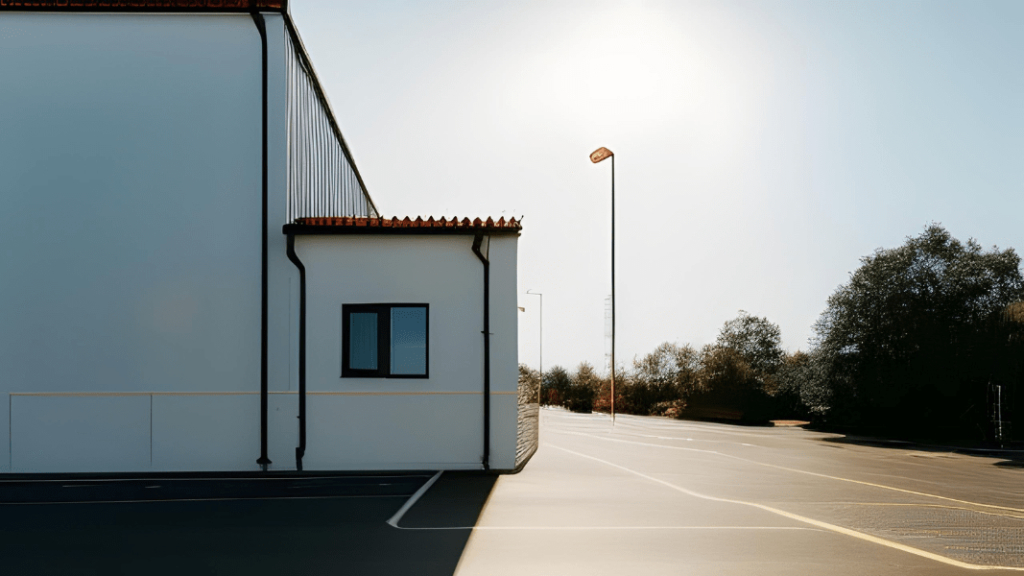Solar energy is a sustainable and renewable energy source that is increasingly being used around the world. Solar panels can be installed on a wide variety of surfaces, but one of the most popular options is the placement of solar panels on insulated panel roofs on prefabricated steel buildings.
In this blog post, we will explore the ease of placing solar panels on prefabricated buildings and how this practice is becoming an increasingly popular option.
Solar panels history
The history of solar panels can be traced back to 1839 when the French physicist Edmond Becquerel first observed the ability of some materials to generate an electrical charge when exposed to light. This phenomenon was not replicated until 1873 when English electrical engineer Willoughby Smith discovered selenium could produce this effect. The observation was further expanded upon in 1876 by William Grylls Adams and Richard Evans Day who published “The action of light on selenium”.
In 1881 Charles Fritts created the first commercial solar panel which continuously generated electricity with exposure to sunlight or diffused daylight. These early panels were highly inefficient compared to modern counterparts but nonetheless laid the groundwork for recent technological advances. In the present day, these panels have been incredibly successful depriving a sustainable, renewable source of energy that is accessible on a global scale.
What are solar panels?
Solar panels have been around for decades and are becoming increasingly popular due to their effectiveness and environmental friendliness. Also known as PV (photovoltaic) panels these convert sunlight into electricity using only the power of the sun. They are made up of photovoltaic cells which contain two layers of silicon, a material that acts as a semiconductor. These cells capture light particles from the sun called photons and convert them into electricity. This electricity is then used to power electrical components or even stored in batteries for future use.
These panels can be installed on rooftops, either in residential or commercial settings. The installation process is relatively simple and requires less maintenance than other sources of energy generation. Additionally, solar energy is a renewable resource that generates no air pollution, making it an attractive choice for those looking to reduce their carbon footprint.
Furthermore, as technology continues to develop, solar cell efficiency has also improved allowing more electricity to be generated with fewer cells than ever before. With all these benefits come lower prices so that everyone can capitalize on this clean source of energy.
Solar panels: benefits
Solar panels are becoming increasingly popular as more business owners look for ways to produce electricity without relying on the main utility grid. Solar cells capture light energy and convert it into usable electrical power. This makes solar energy clean, renewable and abundant compared to traditional sources of fuel such as oil, coal or natural gas. Although installation costs may initially seem high, the systems can last upwards of three decades if properly maintained, leading to long-term savings on energy bills (plus maintenance costs are quite low)
Off-grid living is another great example of how solar panels can be successfully used in residential applications. Living off-grid means being in an area that isn’t connected to the main power grid which can be expensive and complex when setting up using traditional methods. With a solar system, however, you won’t have to pay for costly infrastructure installation like poles and cabling making your setup effortless and lower cost than with regular electric utilities. If you couple this with energy-efficient appliances and LED lighting technology, it’s possible to significantly reduce your carbon footprint while also saving a lot of money over time.

Why place solar panels on insulated panel roofs on prefabricated steel buildings?
Placing solar panels on top of insulated panel roofs on prefabricated steel buildings is an excellent option for harnessing solar energy.
This practice is becoming an increasingly popular option for several reasons:
1. Saving energy and money
Solar energy is a renewable and sustainable energy source that can help save money on your electric bill.
By placing solar panels on top of insulated panel roofs on prefabricated steel buildings, you can take full advantage of solar energy and reduce the amount of energy needed from the electrical grid.
This can help save money in the long run and reduce dependence on fossil fuels.
2. Easy installation
The placement of solar panels on insulated panel roofs on prefabricated steel buildings is a straightforward and convenient option. Solar panels can be installed directly on the top of the building using a suitable mounting system.
This means that no construction work or modification of the building structure is required. In addition, they can be installed in a very short time.
3. Durability
Prefabricated steel buildings are very durable and resistant to weather and natural disasters. Solar panels are also very durable and can withstand a wide variety of weather conditions.
When you combine the durability of steel panels with that of solar panels, you get a very strong combination that can withstand the elements over the long term. In addition, solar panels are also UV and corrosion-resistant, which means they can last for many years without maintenance.
4. Energy Efficiency
Prefabricated steel buildings with insulated panels are quite energy efficient. The insulated panels help reduce heat loss in the winter and keep the building cool in the summer.
By adding solar panels to the building envelope, the energy efficiency of the building can be further improved, which can help further reduce energy costs and improve occupant comfort.
5. Government incentives
Embracing solar power brings significant perks for businesses, with governments offering compelling incentives to encourage renewable energy adoption. These incentives include generous tax credits and deductions, accelerating depreciation for quick cost recovery, feed-in tariffs to profit from surplus energy, renewable energy certificates (RECs) that can be sold or traded, grants and subsidies to ease upfront expenses, net metering for offsetting energy consumption and earning credits, and showcasing environmental commitment for corporate social responsibility benefits. With technology advancements and decreasing costs, solar power adoption provides both environmental responsibility and long-term economic advantages. Governments worldwide actively reward businesses for investing in solar solutions.
Structural considerations for installing solar panels on prefabricated steel buildings.
Integrating solar power systems into buildings has become increasingly popular. For industrial warehouses and steel buildings in general, the installation of PV offers a promising solution to reduce energy consumption and promote environmental responsibility. However, before implementing a solar panel system, there are essential structural considerations to ensure successful and efficient integration.
Roof Load Capacity:
One of the primary concerns when installing PV panels on metal buildings and industrial warehouses is the roof load capacity. Solar panels add significant weight to the roof, and it’s crucial to assess whether the existing structure can withstand the additional load.
A professional structural engineer should conduct a thorough analysis to determine the roof’s load-bearing capacity and make any necessary reinforcements if required.
Roof Slope and Orientation:
The roof slope and orientation play a crucial role in maximizing the solar panel’s energy generation. Ideally, the roof should have a suitable tilt and orientation to capture the maximum amount of sunlight throughout the day. Proper positioning ensures optimal energy output and improves the overall return on investment for the solar power system.
Attachment Methods:
The attachment methods used to secure PV panels to the roof are critical for the system’s long-term performance. For metal buildings and industrial warehouses, specialized clamps and brackets are typically used to secure the panels without compromising the roof’s integrity.
It’s essential to work with experienced solar installation professionals who understand the unique challenges and considerations for metal structures.
Wind and Seismic Loads:
Prefabricated buildings are often located in areas prone to high wind and seismic activity. The solar power system must be designed to withstand these environmental factors to ensure the safety and stability of the entire structure. A thorough structural analysis will help determine the appropriate anchoring and support systems for the PV panels.

How are solar panels installed on insulated panel roofs on prefabricated steel buildings?
The installation of PV panels on insulated panel roofs on prefabricated steel buildings is a simple process that can be performed by a contractor experienced in solar energy installations.
Installing solar panels is a great way to make use of renewable energy and save money on bills. Before getting to that stage however there is an important installation process that needs to be done to get the most out of your system.
The surveyor will need to assess the property before anything else, this includes exploring things such as shading from nearby trees or objects which can affect how much energy you’ll generate.
The basic steps of the installation process are described below:
Important: The following is not intended as a technical installation guide and should not be construed as such. To install photovoltaic panels or do any type of installation on your building, you should hire or seek expert advice.
1. Roof inspection
The first thing to do is to evaluate the roof of the building to determine if it is suitable for solar panel installation. The roof orientation and pitch should be checked to ensure that it is suitable enough for the installation of solar panels.
It should also be checked for shading that could affect solar energy production.
2. System design
After evaluating the roof, the solar contractor will design the appropriate solar panel system for the building.
This includes determining the number of solar panels needed and the type of mounting system required to install the panels on the insulated panel roof.
3. Installation of the mounting system
Once the solar panel system has been designed, the mounting system must be installed on the building envelope. The mounting system is designed to support the solar panels and protect the integrity of the building envelope.
Mounting systems can be of different types, such as rail systems, clip systems or direct attachment systems.
4. Installation of the solar panels
Once the mounting system is in place, the solar panels can be installed. The panels are placed on top of the mounting system and securely fastened in place.
The solar panels are connected together to form a system that can generate solar energy for the building.
5. Connection to the power grid
Finally, the solar panel system must be connected to the electrical system. This is done using a solar inverter that converts solar energy into usable electrical energy for the building.
Once the system is connected to the grid, you can start generating solar energy and reduce the amount of energy needed from the grid, or depending on the region where you do it, you can even sell the surplus to your utility company.
Conclusion
Incorporating solar panels on insulated panel roofs of prefabricated steel buildings offers a promising pathway toward a sustainable and energy-efficient future. This environmentally responsible practice allows businesses to harness the power of solar energy, reducing their carbon footprint and saving money on electricity bills.
By opting for solar panels in industrial warehouses and steel buildings, companies can benefit from several advantages. The easy installation process ensures minimal disruption to ongoing operations, while the durable combination of steel panels and solar modules guarantees long-term performance and resilience against various weather conditions.
To embrace a brighter future with sustainable energy solutions for your prefabricated steel buildings and industrial warehouses, reach out to us today. We look forward to working with you on your next solar panel project and exploring how Inver Group can bring value and efficiency to your endeavors.

